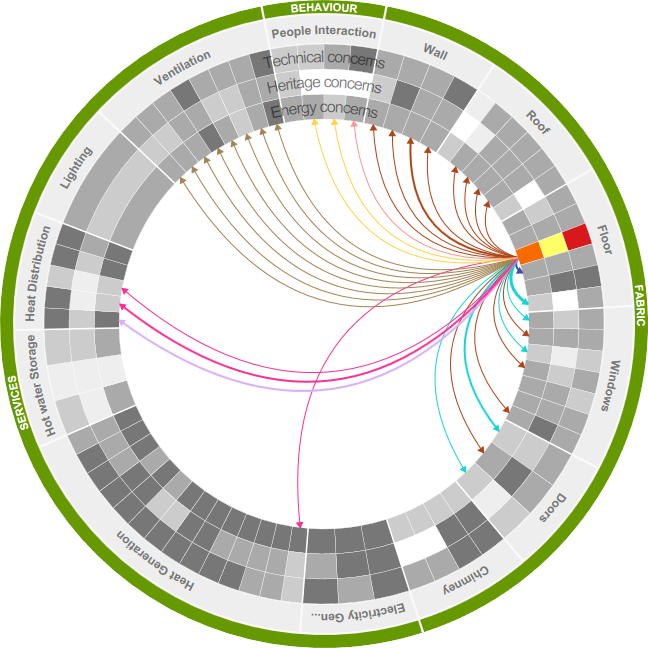Concern & action: Rebound effects
Rebound effects occur when the full energy saving of a measure is not achieved due a number of factors, including comfort take back, change in occupation or building use pattern, use of savings to fund our energy consuming activities.
Suggested actions
Before Implementation
Record actual energy use by users (from meter readings) before implementation of measures and compare (where possible) with national benchmarks. Record default settings for heating used prior to refurbishment and assess comfort conditions. At design stage, carry out a calculation of predicted energy use reduction as a result of refurbishment based on, as far as possible, realistic (i.e. measured) estimates of pre-improvement fabric heat losses, including infiltration and occupants setting points and comfort requirements.
During implementation
Give clear information to users about appropriate default settings. Consider choice of the user interface for temperature control to steer users to acceptable temperature settings.
After implementation
Remind users about appropriate default settings for energy efficiency and make sure they know how to adjust temperature controls. Measure the real reduction of energy in use post refurbishment using metered heating energy use in comparison with logged thermostat settings and room temperature measurements. Assess and report results with regards energy use and comfort (including actual U-values, metered heating energy use and logged thermostat setting, rooms temperature readings and comfort assessment), comparing them with national benchmarks. Feedback results to occupants and wider building energy performance interest groups.
RELATED MEASURES
 FABRIC (29)
FABRIC (29)
External Wall insulation
Internal Wall insulation
Frame infill insulation
Loft Hatch insulation
Loft insulation
Rafter insulation
Flat roof insulation
Room in roof insulation
Loft hatch and ceiling airtightness
Floor insulation between/under floor joists
Floor Insulation on top of existing floor finish
Floor void filled with insulation
Exposed soffits to upper floors: Insulation in between joists or under soffit
Replacement of existing ground floor with new concrete insulated solid ground floor
Increased Floor airtightness
Window draughtproofing
Energy efficient glazing
Window refurbishment
Secondary glazing
Window Shutters Refurbishment
Window Replacement
Door draughtproofing
High performance doors
Door refurbishment
Chimney removal complete
Chimney removal internal
Chimney blocking
Reduced air flow
 BEHAVIOUR (1)
BEHAVIOUR (1)
RELATED REFERENCES (3)
The impact of energy efficient refurbishment on the space heating fuel consumption in English dwellings, Energy and Buildings 38(10): 1171-1181. (2006)
Hong, S. H., T. Oreszczyn, and Ridley, I., (Warm Front Study Group)
Home is where the hearth is: grant recipients\' views of England\'s home energy efficiency scheme (Warm Front) (2006)
Gilbertson, J., Stevens, M., Stiell, B. and Thorogood, N.
Micro CHP Accelerator - final report (CTC788) (2011)
Guy,R. and Sykes,B.

